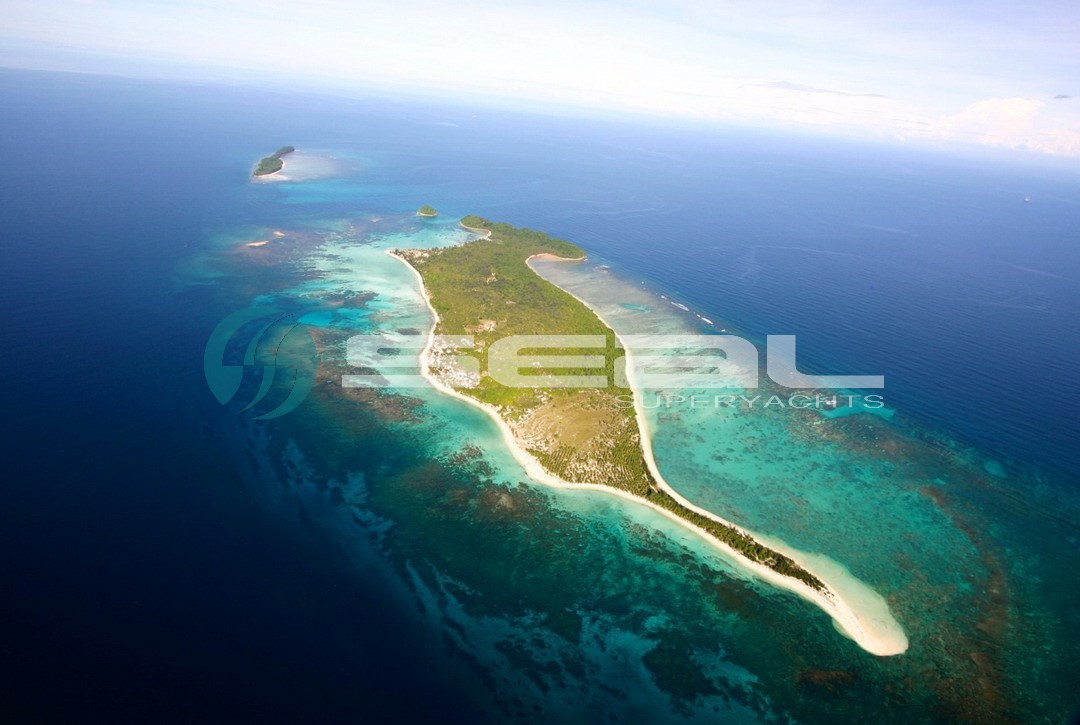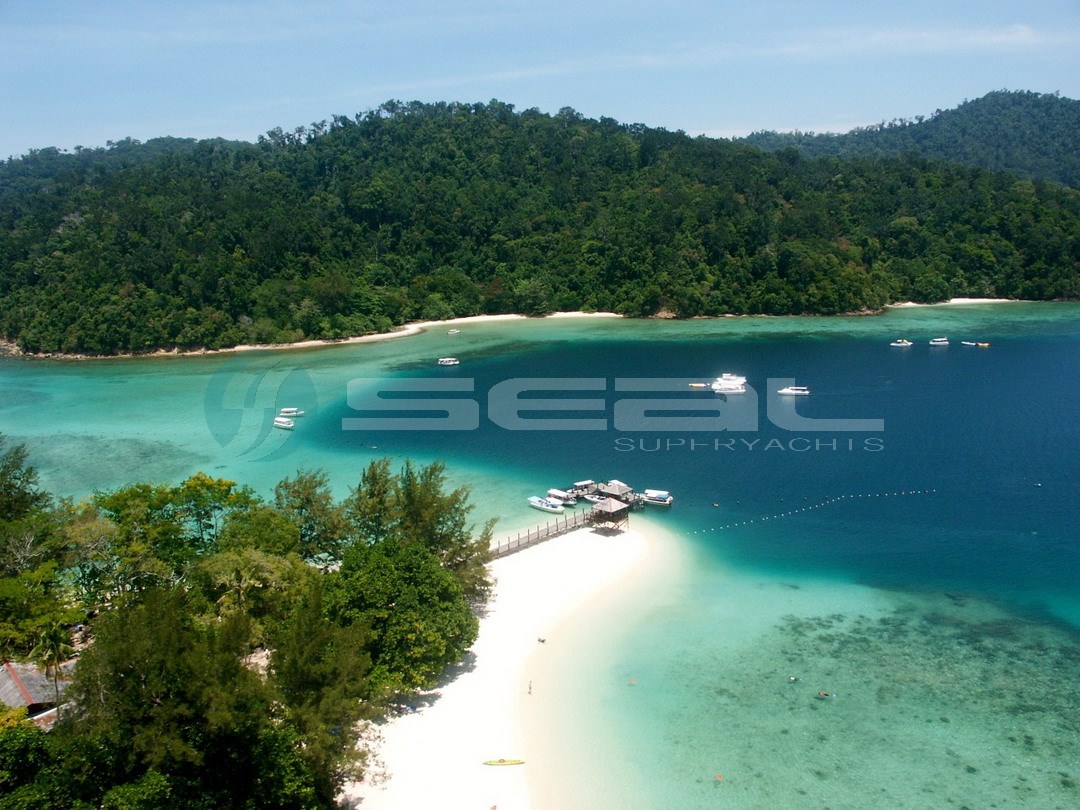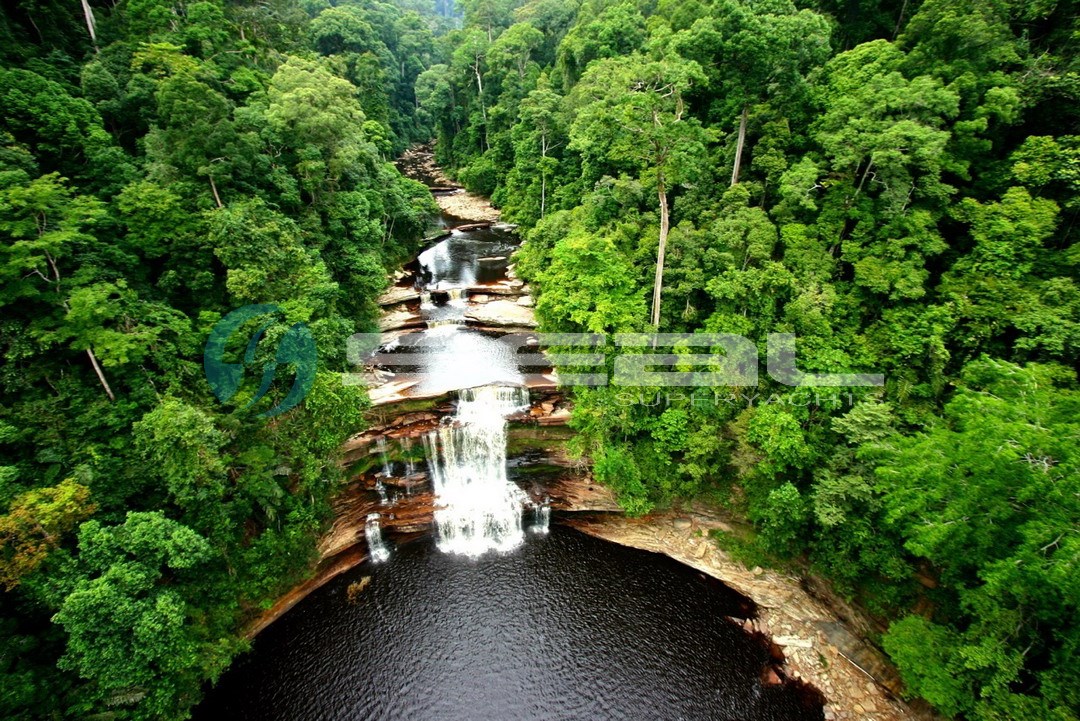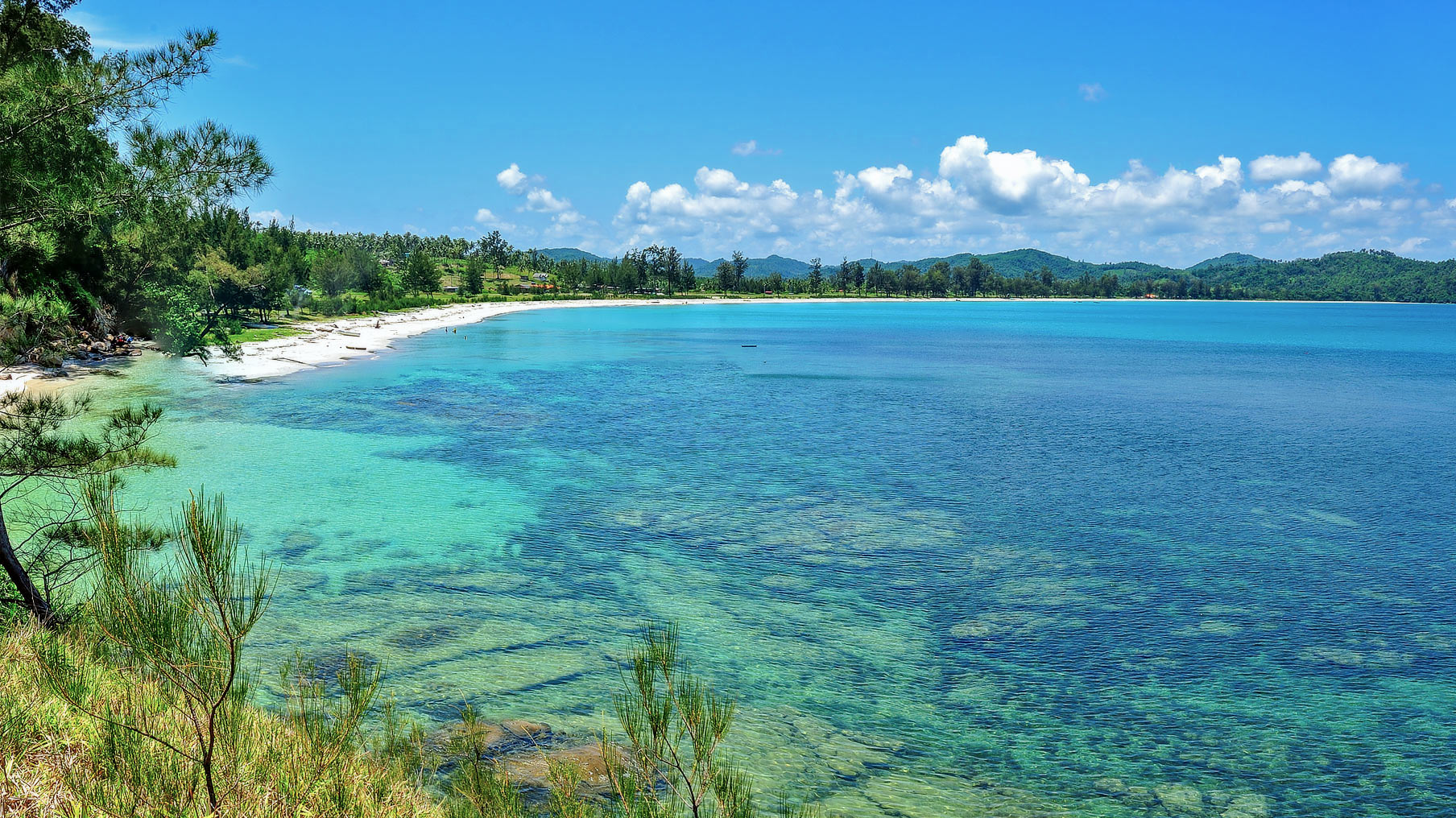Kota Kinabalu, the capital of Sabah is an ideal base for yachts, having both an international airport and excellent marina facilities. Undoubtedly this this lush corner of Borneo will one day be one of Asia’s most popular yachting destinations and the government has been working hard to enhance the attraction for boating tourism with a series of new developments. In the nearby port of Labuan a public marina has recently been completed, and more facilities are sure to follow.

From Kota Kinabalu the most accessible islands are in the Tunku Abdul Rahman Marine Park. From here one can travel up or down the west coast towards scenic bays, rivers, and islands with attractions above and below water. North of Kota Kinabalu is Mantanani, notable for resident dugong (sea cows), a sheltered anchorage, deserted white sand beaches and typically crystal clear waters.
Just 35 nautical miles south of Kota Kinabalu is Pulau Tiga (the original “survivor” island from the reality TV series). Geothermal activity below the centre of the island has created warm bubbling mud baths which are not only relaxing to sit in but also therapeutic. Here one can stretch the legs on nature trails which take you through the jungle. Resident wildlife include macaques, giant monitor lizards, wild boar, and hornbill.
Further north is Mengalum Island, where you can have a hand at fishing in an area that is known for Dogtooth and Yellow fin Tuna. The adventurous divers among you may want to venture further north again to a coral atoll called Layang Layang. Layang Layang is famous for its resident schools of Hammerhead sharks, and incredible underwater visibility that rarely drops below 30 metres.
After a cruise, visitors can set their sights on climbing the majestic Mt Kinabalu, SE Asia’s highest peak, or take on a white water rafting challenge on one of the major rivers flowing down from the Croker Range. Culturally, there are many places of interest from traditional “kampung air” (water villages), longhouses and the famous House of Skulls where the local Kadazan tribe displays trophies from a not so distant, headhunting past. A sejour in Kota Kinabalu offers the opportunity to relax tired muscles at a 5 star beach resort and pamper oneself with shopping, spa therapies and fine dining.
Sabah’s Northern Tip – Natural Beauty and Seclusion
Discover the secluded northern beaches and islands of Borneo, starting from the sleepy and idyllic town of Kudat. Kudat, once the capital of British North Borneo, used to be a stop-ever point for ships carrying cargo back and forth from Labuan to Kota Kinabalu to Sandakan or up to the Philippines.

This northern region is still very rural, however with a new marina, golf course, and a planned tropical villa development, the northern most tip of Borneo promises to be a cruising playground of the future. The area’s natural beauty is set to harness a new wave of discerning travellers seeking the ultimate tropical lifestyle away from the crowds of the enduringly popular Bali & Phuket. Furthermore, adjacent to the marina in Kudat is a small dry dock, with haul out by travel lift, making it an ideal place for yachts to carry out minor maintenance.
Kudat is also the heartland of the Rungus tribe, a subsection of the Dusun people. Many Rungus still live in longhouses (communal dwellings where each family has their own sleeping and cooking quarters but shares a long verandah) and visits can be arranged offering an insight into the customs, music, dance and cuisine of this traditional culture.
Offshore, past the northern tip of Borneo, are the islands of Banggi, Balambangan and Malawali, which are gazetted to become Malaysia’s newest and largest Marine Park. However, please beware of the shallow fringing reefs surrounding these islands. In fact the reef hazard means that there are several shipwrecks for the underwater adventurer to explore, many from WWII, lying in 20 to 50 metres of depth.
Banggi, Balambangan and Malawali are only accessible by boat. Banggi itself is the largest island in Malaysia with an area of 440 square km, and is very quiet with a population of only 20,000. These islands offer a real escape and feeling of isolation, with empty white sand beaches, jungle covered hillsides, clear waters, beautiful bays, reefs and mangroves. Here there are indigenous people who still live in isolation from the modern world and retain century-old traditions.
Sabah’s East Coast – A Wildlife Safari
The East Coast of Sabah is divided from the West Coast by the rugged Crocker mountain range and visitors often fly into Sandakan which becomes the starting point, or gateway, to a remarkable wildlife safari.

In Sandakan itself is the world renowned Sepilok Orang Utan Rehabilitation Centre. Known not only for its contribution to the research and rehabilitation of the Orang Utan’s, the centre also focuses on the study of the endangered Bornean Rhino. Labuk Bay Conservation Area is another 30 minutes from here and known for the Proboscis or long-nosed monkeys.
A visit to the Sandakan yacht club, together with the English Tea house and the Agnes Keith museum, are all that remain to remind the visitor that this was once a charming, even idyllic, outpost of the British Empire, replete with white chapels and picket fences. For a sense of this forgotten age, Agnes Keiths memoire (“Land Below the Wind”) is a highly recommended read.
Sailing out of Sandakan Bay and into the Sulu Sea we find the serene and secluded tropical islands of the Turtle Island Marine Park. The park has an important turtle breeding program, the first and largest in South East Asia, and they are safe-havens for both Green and Hawksbill Turtles. A few hours further north, Lankayan Island, known for Whale Shark spotting, holds crystal waters and healthy coral reefs. In diving circles Langkayan is highly regarded as a “macro” paradise.
Sailing south of Sandakan we can find the mouth of the Kinabatangan, the second longest river in Malaysia, with a length of 560 kilometers from its headwaters in the mountains of southwest Sabah, to its outlet at the Sulu Sea. A wide river with deep channels, navigable for yachts with shallow drafts, the Kinabatangan is known for its remarkable wildlife including large primates, crocodiles, snakes and elephants, and fascinating habitats such as limestone caves at Gomantong hill, riverine forest, oxbow lakes and salty mangrove swamps.
A helicopter flight, or off road 4×4 drive, provides the serious nature lover access to the remote but spectacular Meliau basin, and/or the Tabin Wildlife Reserve, known for Pygmy Elephants, and the rare Borneo Rhinoceros.
Footnote:
Contact Seal Superyachts Borneo for detailed information about cruising around Borneo, superyacht charter regulations and about how we can support your visit.
Principle agent Shah Nizar is proud to have worked with many of the World’s largest Superyachts and has extensive knowledge of Borneo and the surrounding area.
Shah Nizar
Phone: +60 16 378 6313
Email: malaysia@seal-superyachts.com
Footnote:
Contact Seal Superyachts Malaysia for detailed information about cruising around Malaysia, superyacht charter regulations and about how we can support your visit.
Principle agent Shah Nizar is proud to have worked with many of the World’s largest Superyachts and has extensive knowledge of Malaysia and the surrounding area.
Shah Nizar
Phone: +60 16 378 6313
Email: malaysia@seal-superyachts.com
